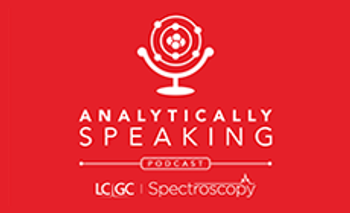Article Highlights
- Conventional IR spectroscopy faces limitations such as bulky equipment, limited bandwidth, and sensitivity issues, prompting the exploration of quantum IR spectroscopy as an alternative method.
- Researchers from Kyoto University developed ultra-broadband quantum entangled states of visible and IR photons, enabling unprecedented broadband measurements using a specially designed nonlinear crystal.
- The experimental demonstration of quantum IR spectroscopy exhibited great accuracy in measuring IR spectra across various samples, showing potential for applications in quantum imaging.
Infrared (IR) spectroscopy is a spectroscopic technique that measures interactions of IR radiation with matter by absorption, emission, or reflection. IR spectroscopy is normally used to identify chemical substances and functional groups in all phases of matter (1).
Although it is a mature and well-understood analytical method used for analysis of organic and inorganic molecules, IR spectroscopy does have limitations as a technique. Conventional IR spectroscopy encounters challenges such as bulky equipment, limited bandwidth, and sensitivity issues from blackbody radiation (2). In this study from Optica, researchers from Kyoto University explored using quantum IR spectroscopy as an alternative method to traditional IR spectroscopy (2).
In their study, the research team generated ultra-broadband entangled states of visible and IR photons spanning wavelengths from 2–5 micrometers (2). This feat was achieved through the utilization of a specially designed nonlinear crystal with a chirped poling structure, enabling unprecedented broadband measurements crucial for various spectroscopic applications (2).
Using the ultra-broadband quantum entangled photons, the research team made a nonlinear quantum interferometer. Doing so allowed the team to realize broadband IR spectroscopy using a silicon visible detector (2).
The research team then executed an experimental demonstration of quantum IR spectroscopy (QIRS) to test the system. The system exhibited great accuracy in measuring IR spectra across several types of samples, including fused silica glass, polystyrene films, and liquid-phase ethanol (2). The results obtained from this study show significant alignment with the data acquired through conventional Fourier transform infrared (FT-IR) spectroscopy (2). As a result, the research team was able to show that the quantum-based approach is accurate and consistent.
The implications of this breakthrough extend beyond spectroscopy, with potential applications spanning quantum imaging, optical coherence tomography, and quantum information processing (2). By surmounting previous constraints and unlocking ultra-broadband capabilities, the study lays the foundation for the development of highly sensitive and compact infrared spectrometers empowered by quantum entangled photons (2).
As a result, the research team showed that innovations in spectroscopic technology can result in positive change when analyzing IR spectra.
This article was written with the help of artificial intelligence and has been edited to ensure accuracy and clarity. You can read more about our policy for using AI here.
Reference
- Wikipedia Infrared spectroscopy Home Page. https://en.wikipedia.org/wiki/Infrared_spectroscopy (accessed 2024-02-27).
- Tashima, T.; Mukai, Y.; Arahata, M. Ultra-broadband Quantum Infrared Spectroscopy. Optica 2024, 11 (1), 81–87. DOI: 10.1364/OPTICA.504450





